Taking a disturbed soil sample is the most common method of soil sampling in soil science and related fields of application. There are several techniques of soil sampling. The choice of the most appropriate way depends on the specific purpose of the sampling and the subsequent use of the samples.
A small shovel can be used for taking large samples from a pit or soil surface. A gouge soil sampler is employed if we need only a small sample, e.g. for determination of soil water content by mass. If we need a larger amount of sample without the necessity of digging a pit, we can use one of the Edelman augers. There are also other special types of soil augers, e.g. a spiral auger for sampling stony soils or the Riverside auger for sampling dry or sandy soils.
The video shows soil sampling using a gouge soil sampler and an Edelman auger.
Materials and tools
Gouge soil sampler or auger, hammer or rubber hammer (not necessary for auger), spatula, plastic bags, rubber band, marker pen, notepad, pens, pencils, wash cloth, bag or box for samples transport, plastic foil, sampling containers and mobile balance (for actual water content determination). The tare masses of sampling containers should be determined in advance.
Important notes
The gouge soil samplers enable us to sample the soil at different depths; however the amount of soil taken is limited.


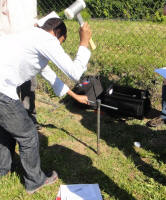
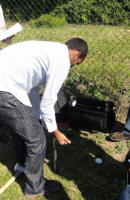

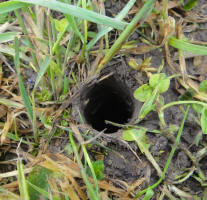
The whole soil profile can be sampled using the same gouge soil sampler or auger, which can in some cases substitute the need for digging a standard soil pit.
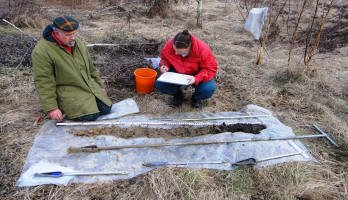
Determination of soil water content by gravimetric method
The Gravimetric method is the basic reference method for soil water content determination. It determines the water content in the soil sample directly based on weighing the sample in its wet state and then in its oven-dry state. A sample of about 10 or 20 g is dried until its mass is constant; 6 hours is enough for this sample size. The drying temperature is 105°C for mineral soils and 60°C for organic soils.
This method is commonly used both in the field and in the laboratory. The immediate weighing of the wet sample is very important in order to avoid any influence of evaporation on the resulting values. The accuracy of the method depends on the accuracy of weighing (within at least 0.01 g) and on the homogeneity of the soil. The gravimetric method is destructive; that is why it is not suitable for sustained observation.
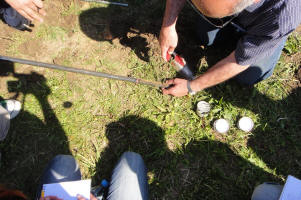
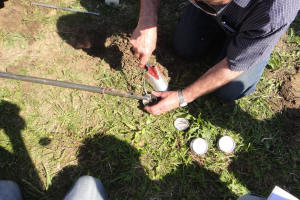

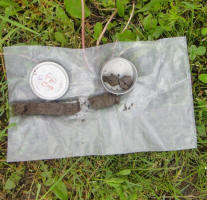
Calculation of water content by mass w

Mass of water: The mass of the wet soil sample (including the sampling container) minus the mass of the dry soil sample (including the sampling container) (g).
Mass of dry soil: The mass of the dry soil sample (including the sampling container) minus the mass of the sampling container (g).
Units: w = [g g-1]; w * 100 = [% by mass]
References
Hillel, D. (1998) Environmental Soil Physics. Academic Press. San Diego, USA. p. 771. ISBN 0-12-348-525-8.
Kutílek, M., Nielsen, D. (1994) Soil Hydrology. GeoEcology Textbook. Catena Verlag, Cremlingen-Destedt, Germany. 370 pp. ISBN 3-923381-26-3.










